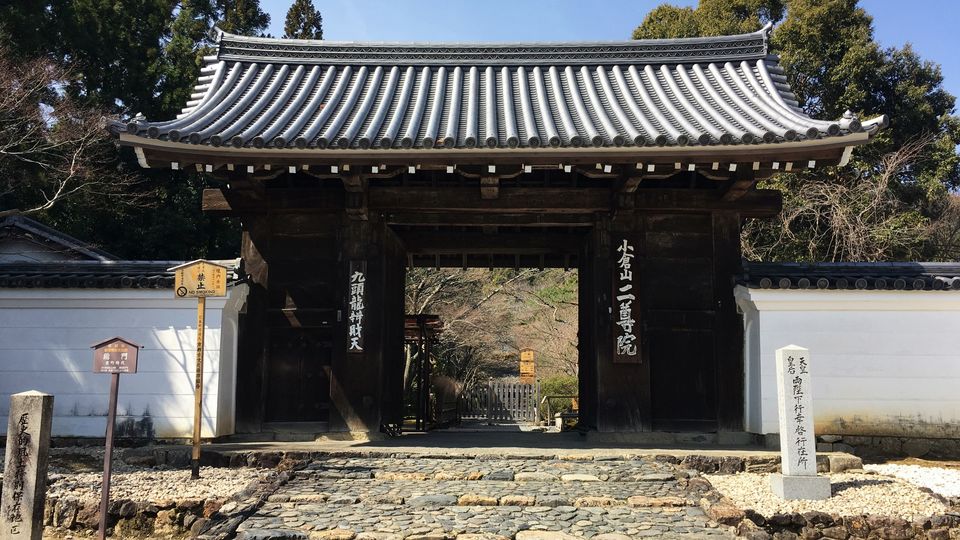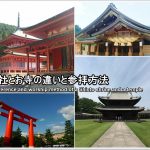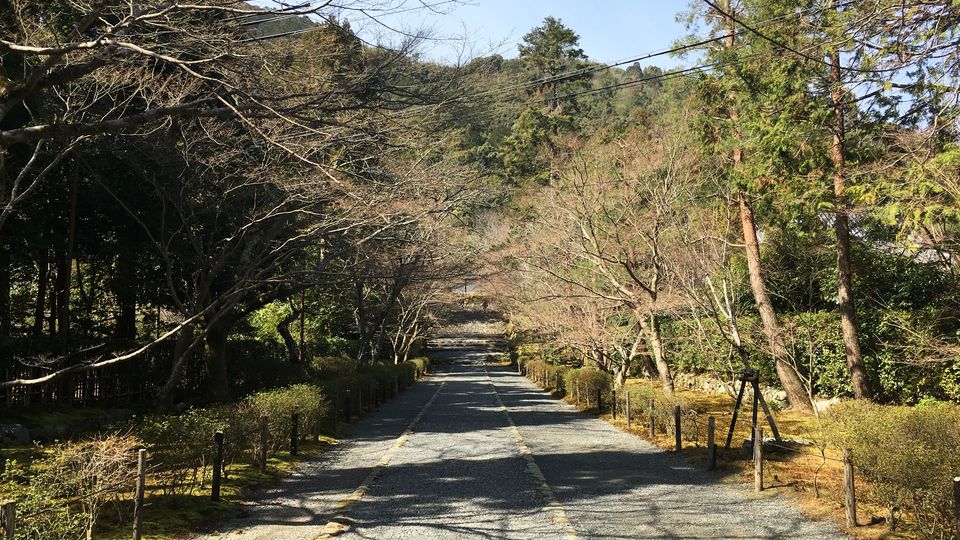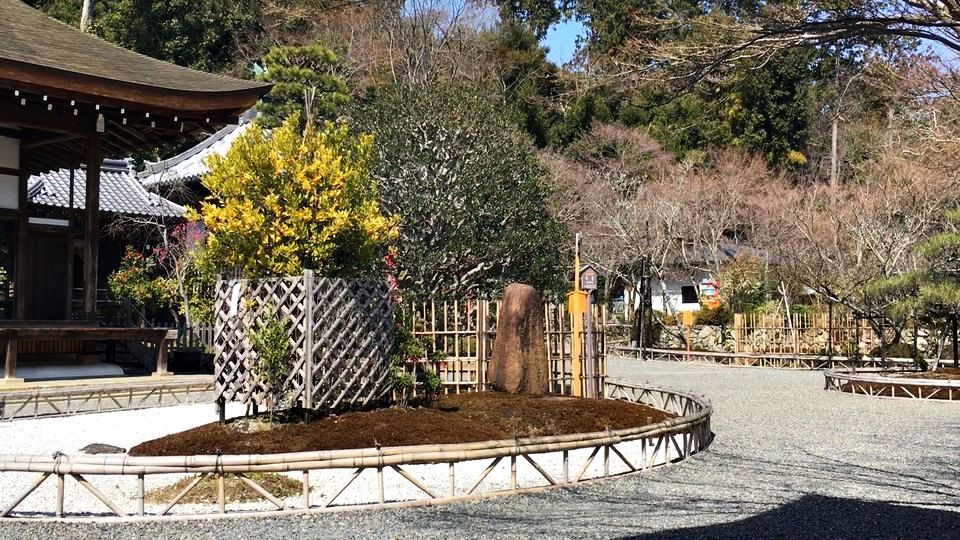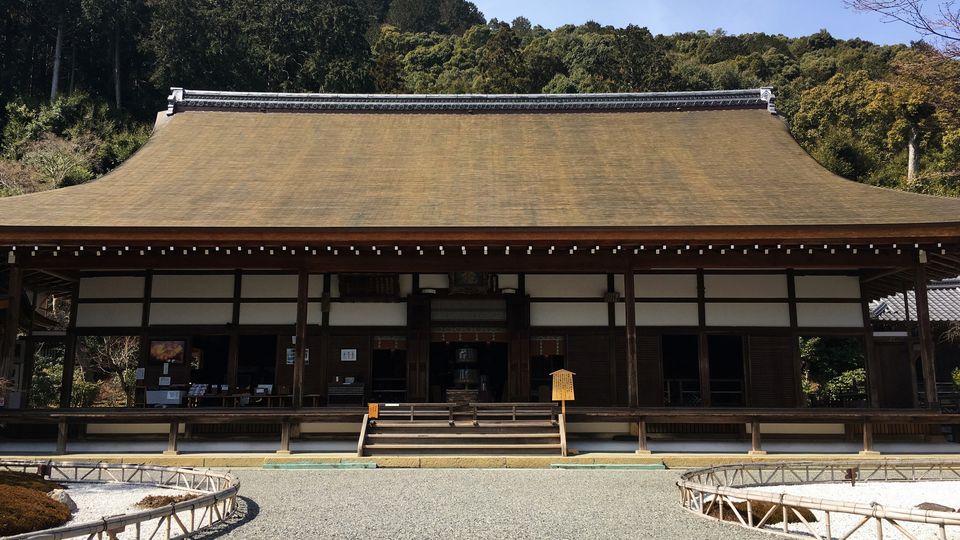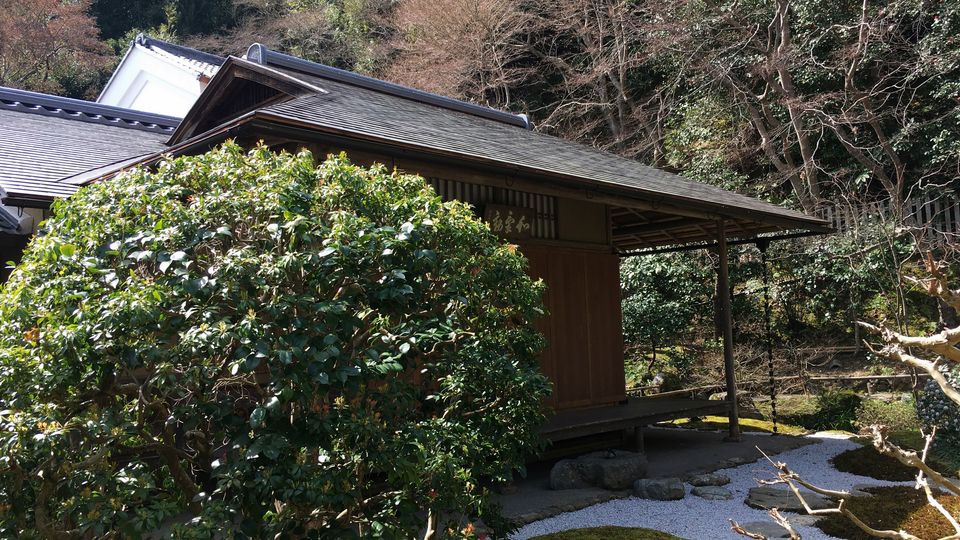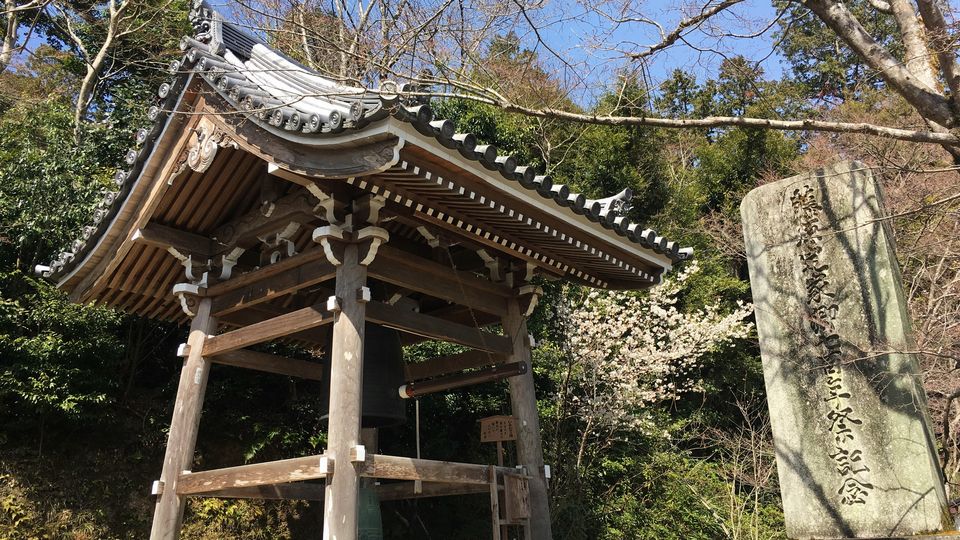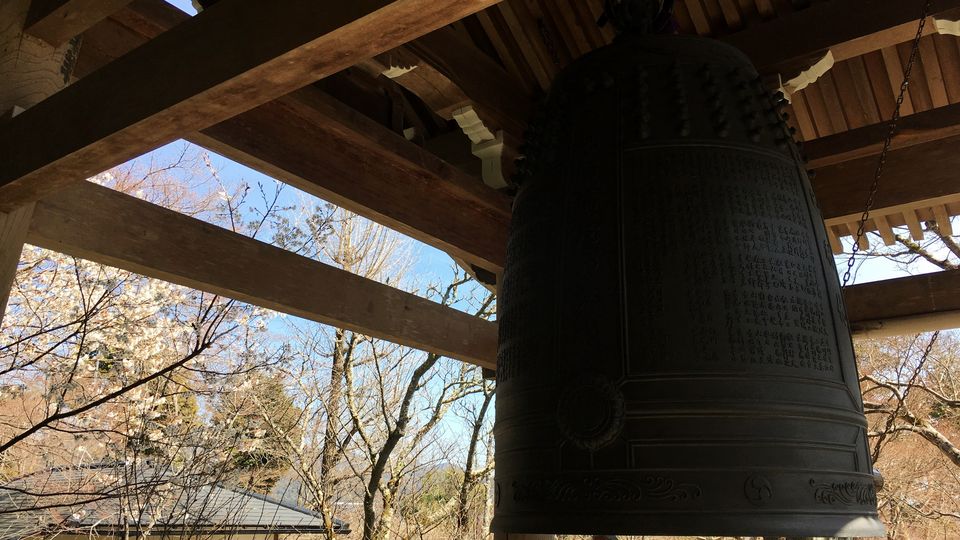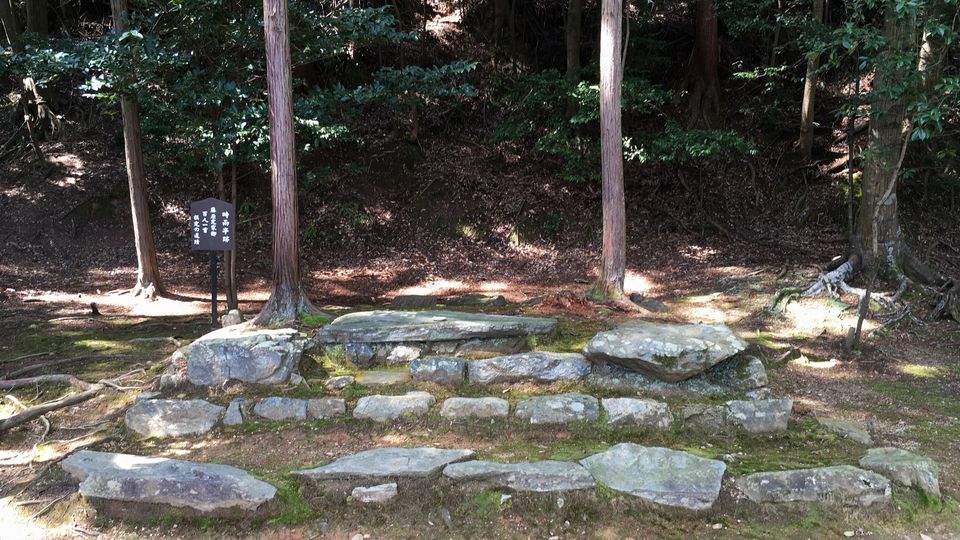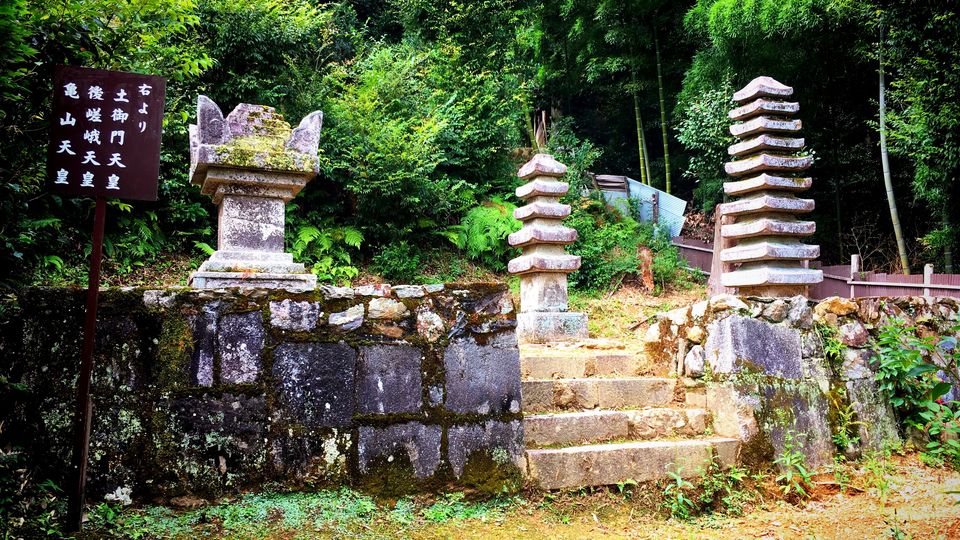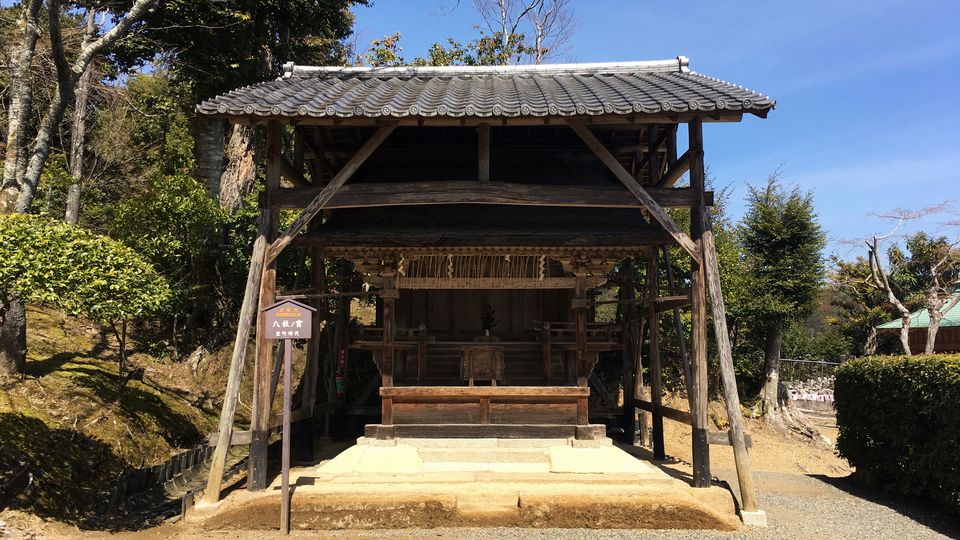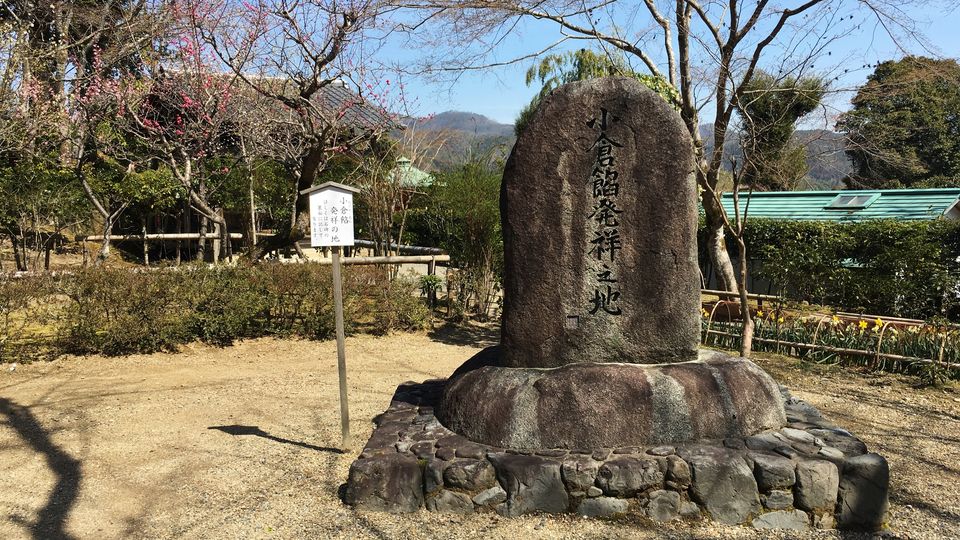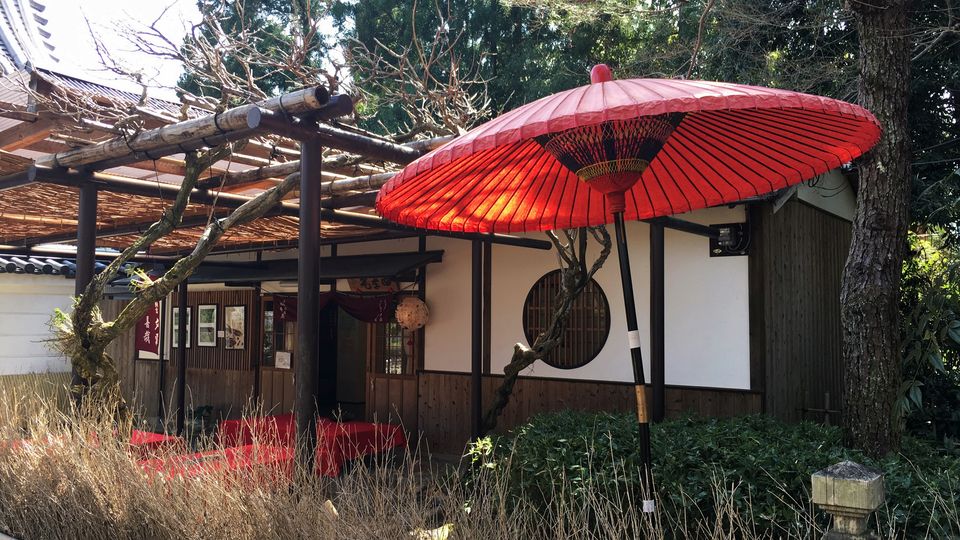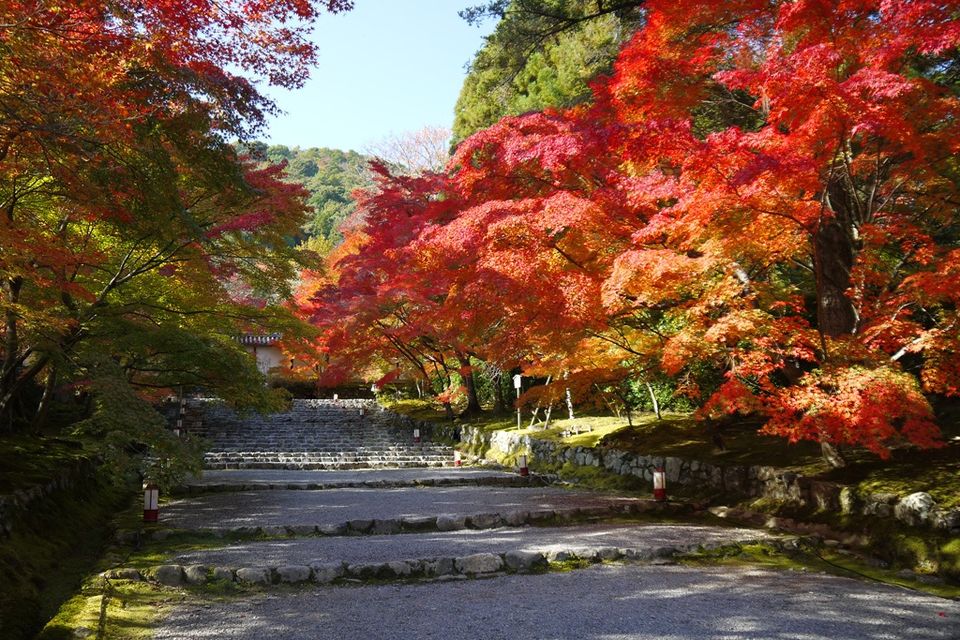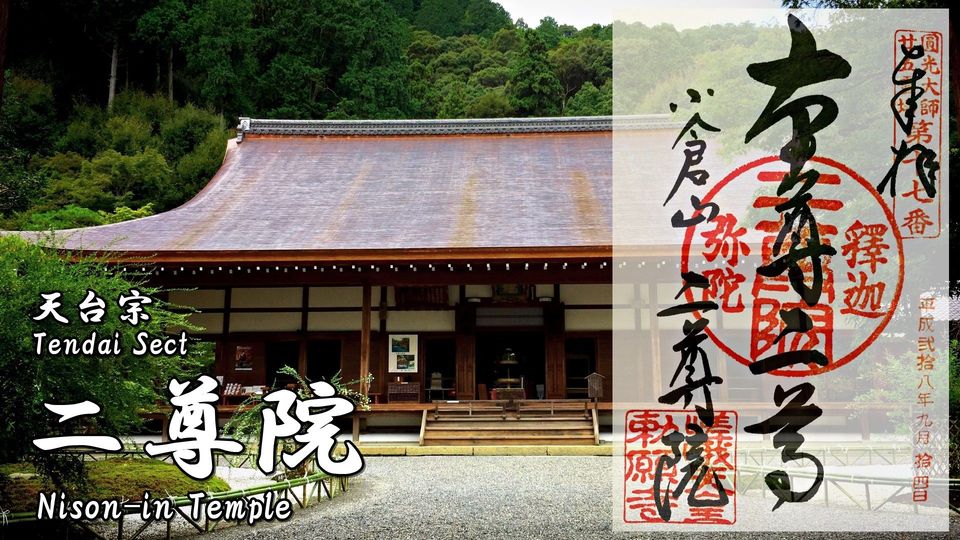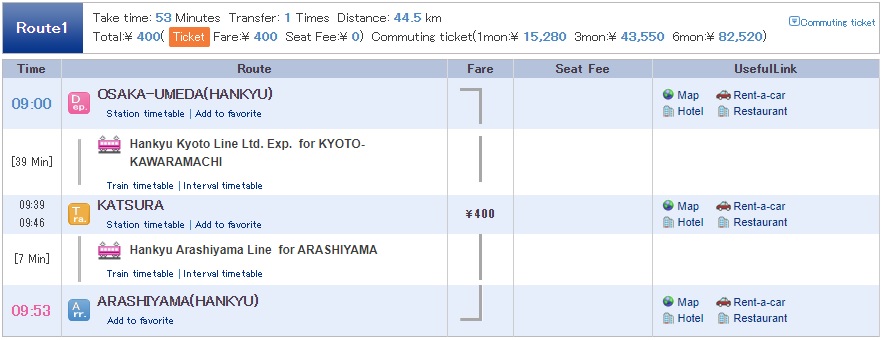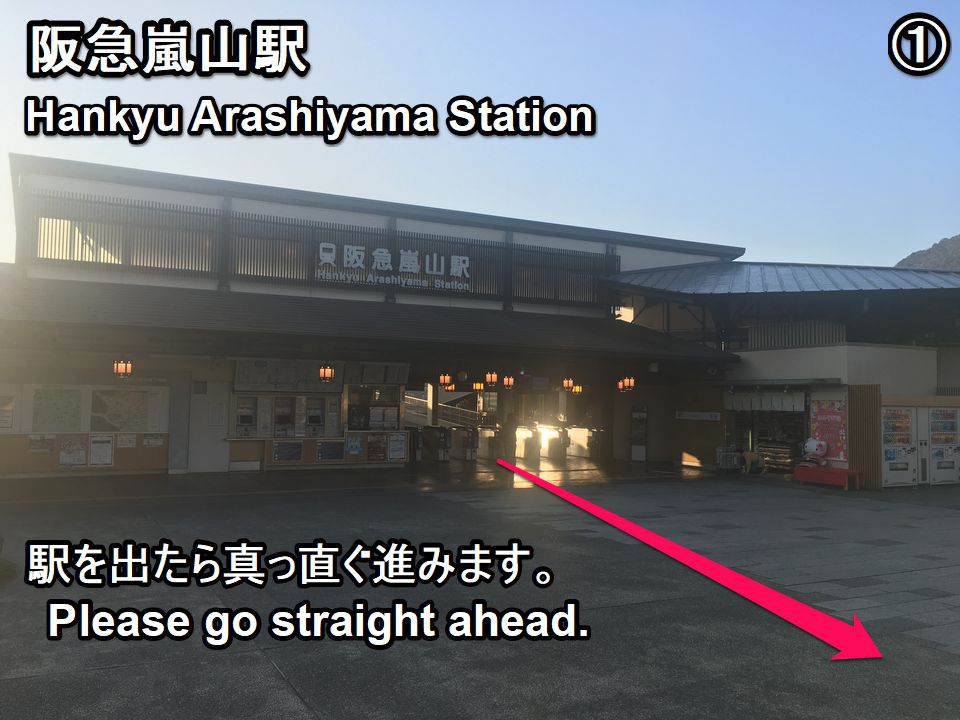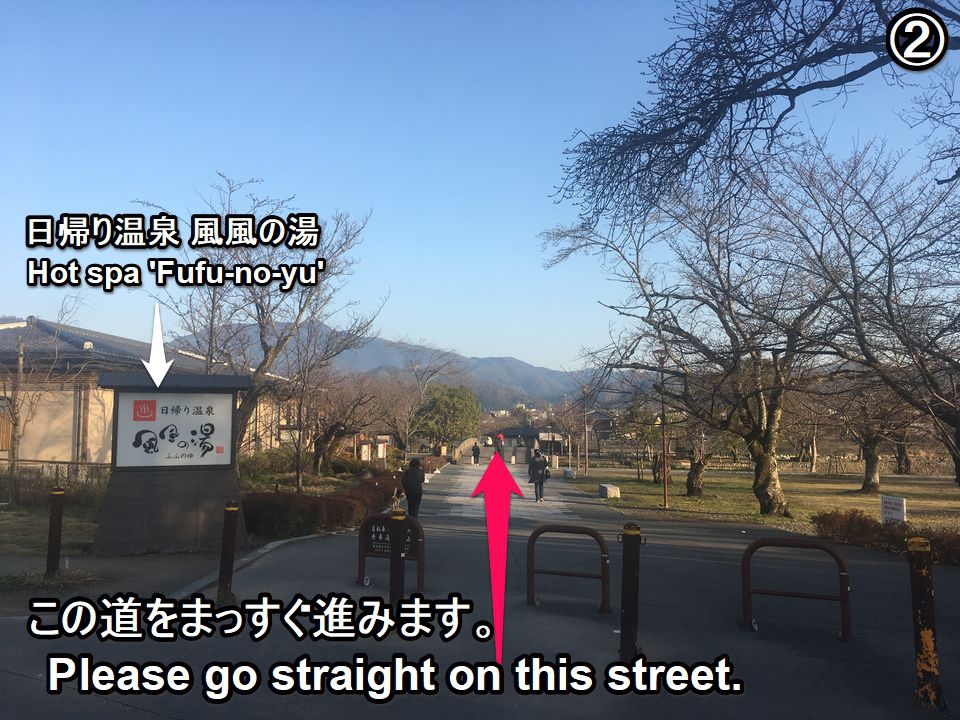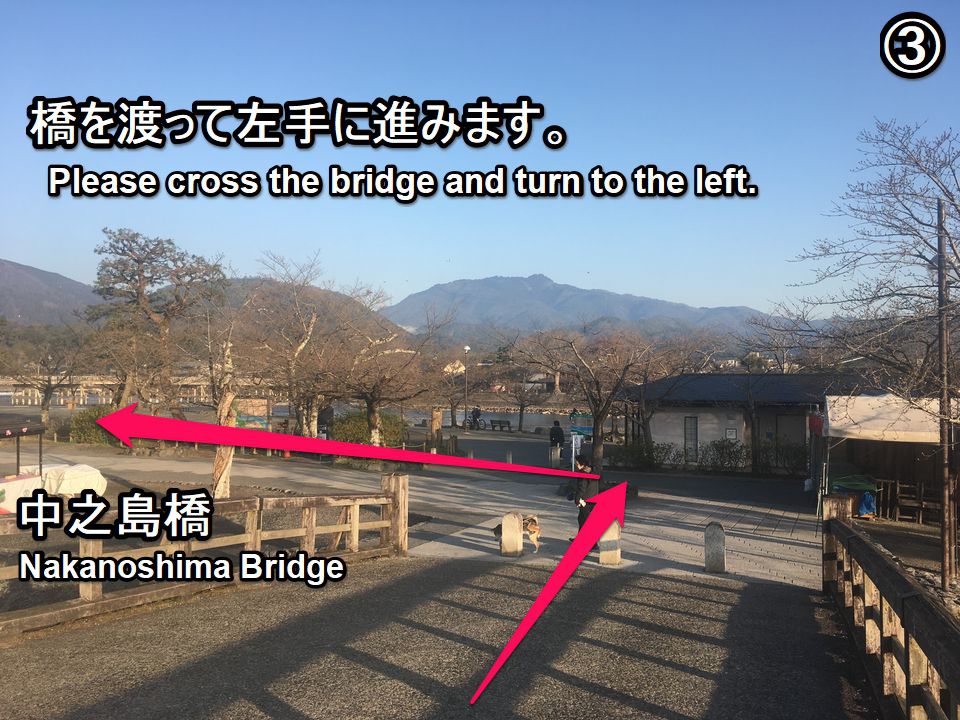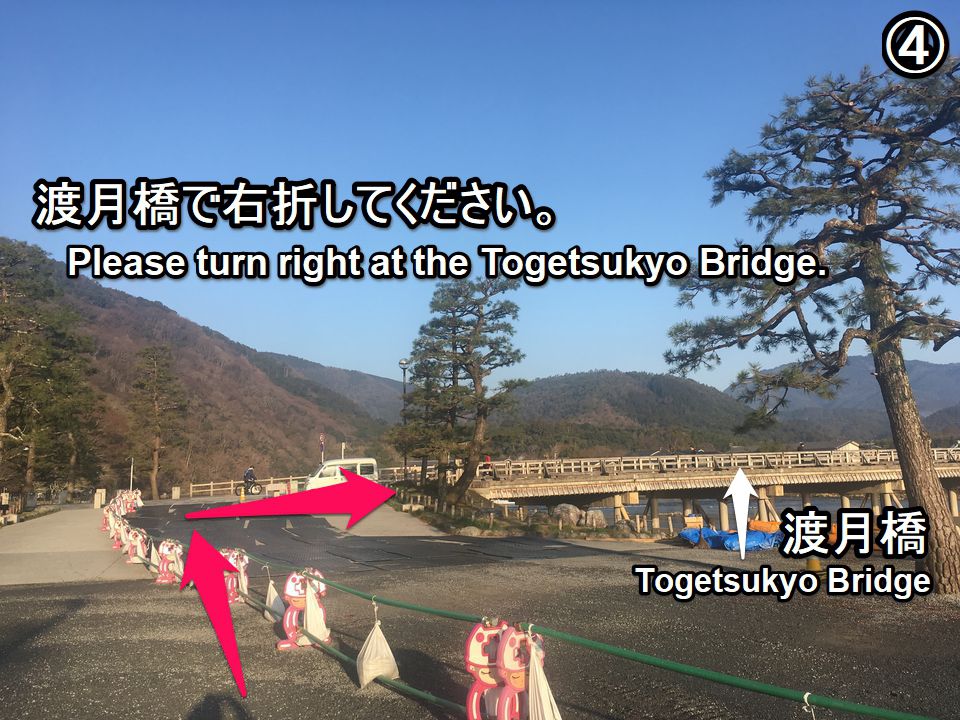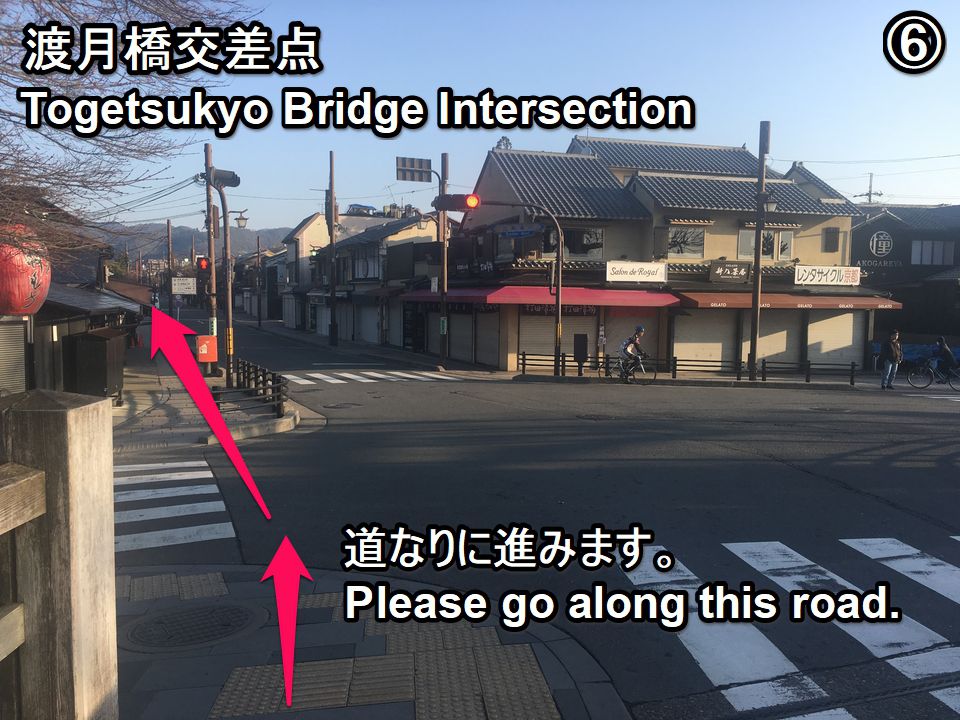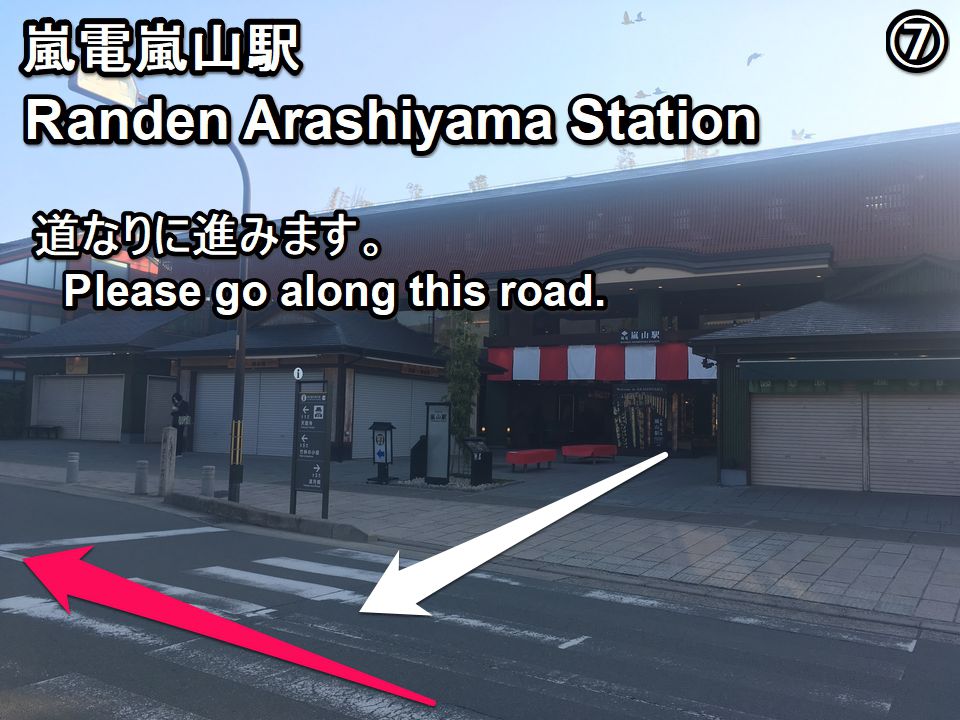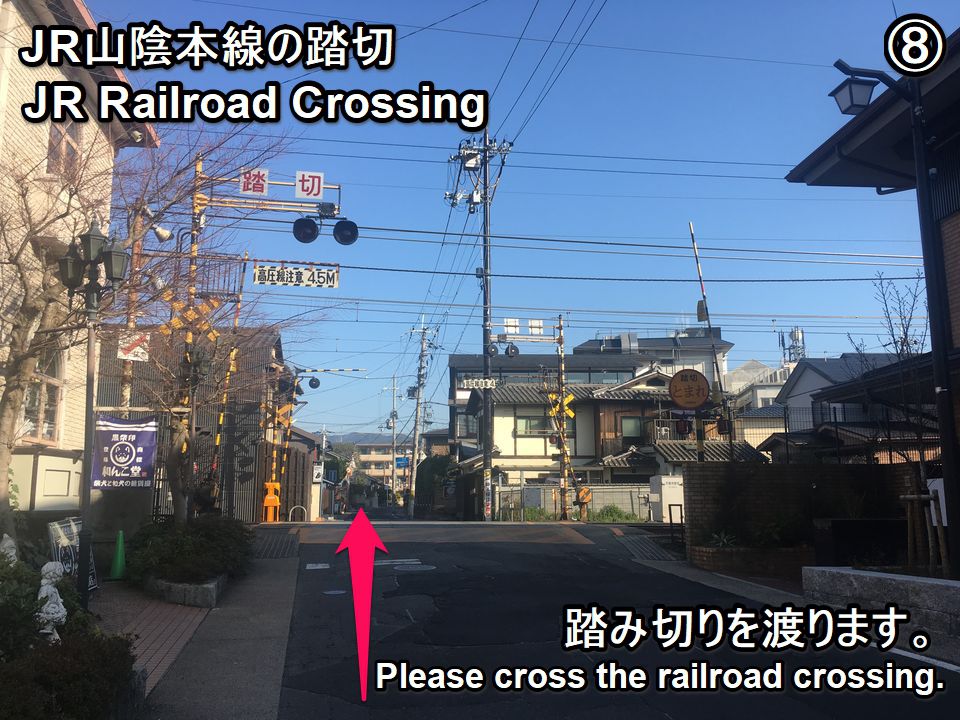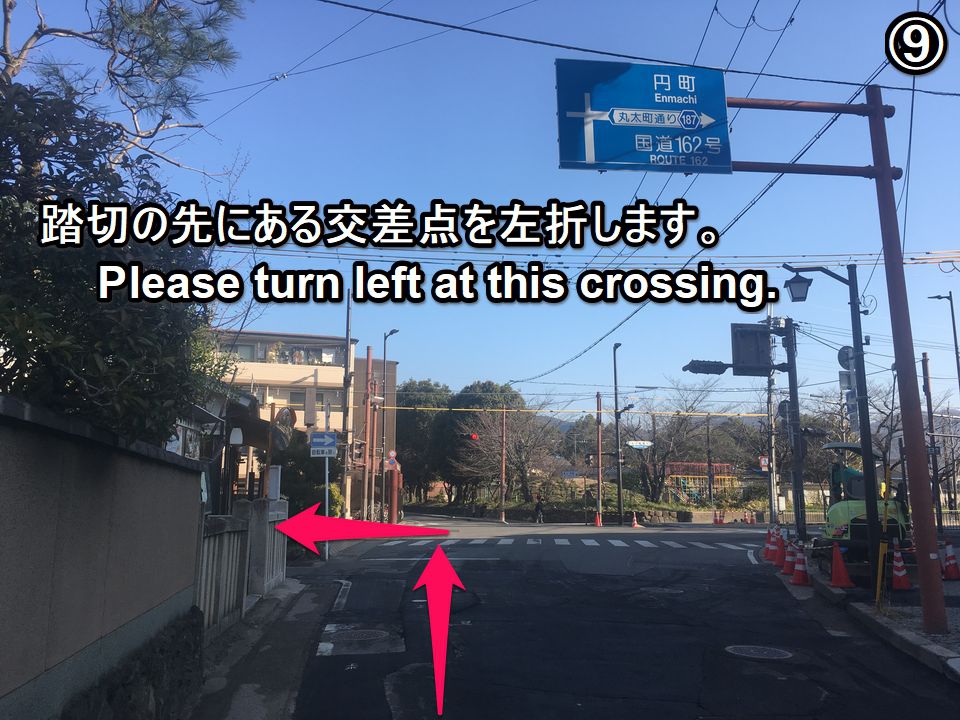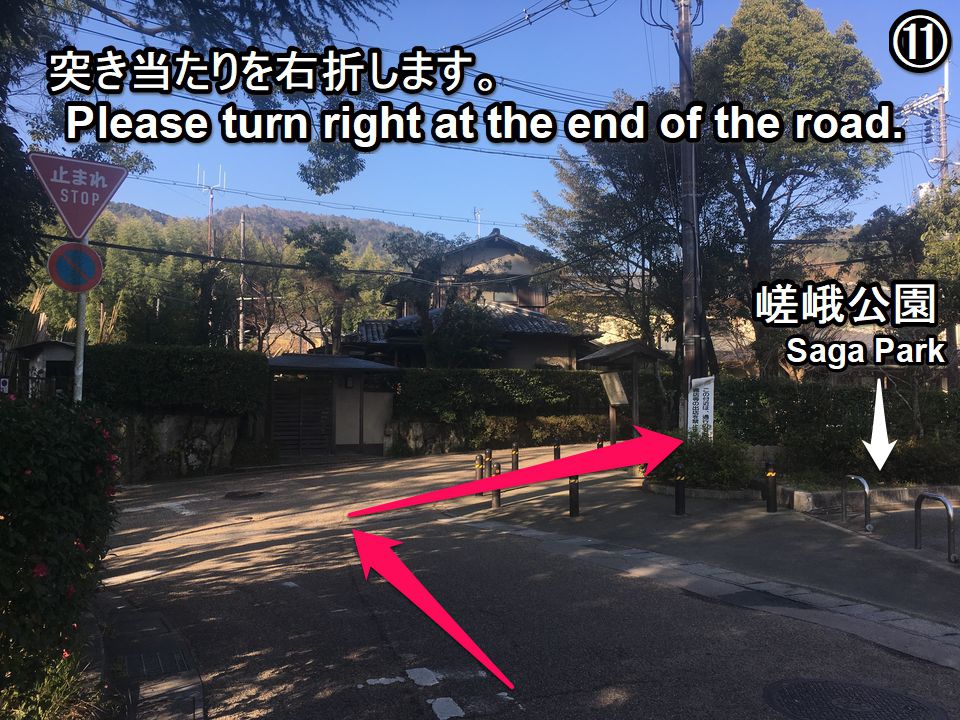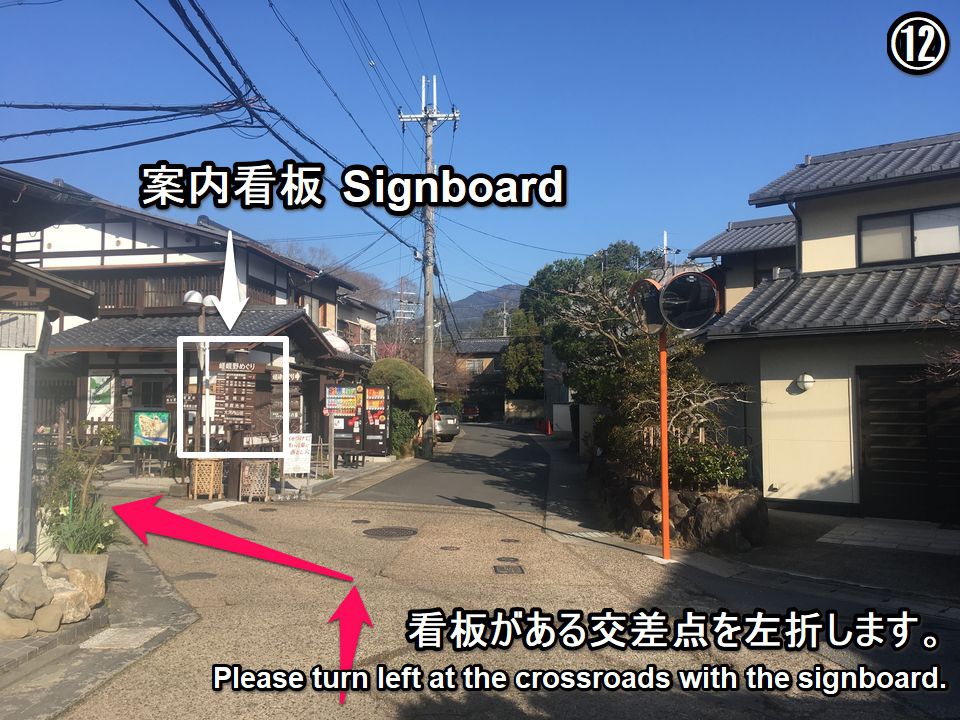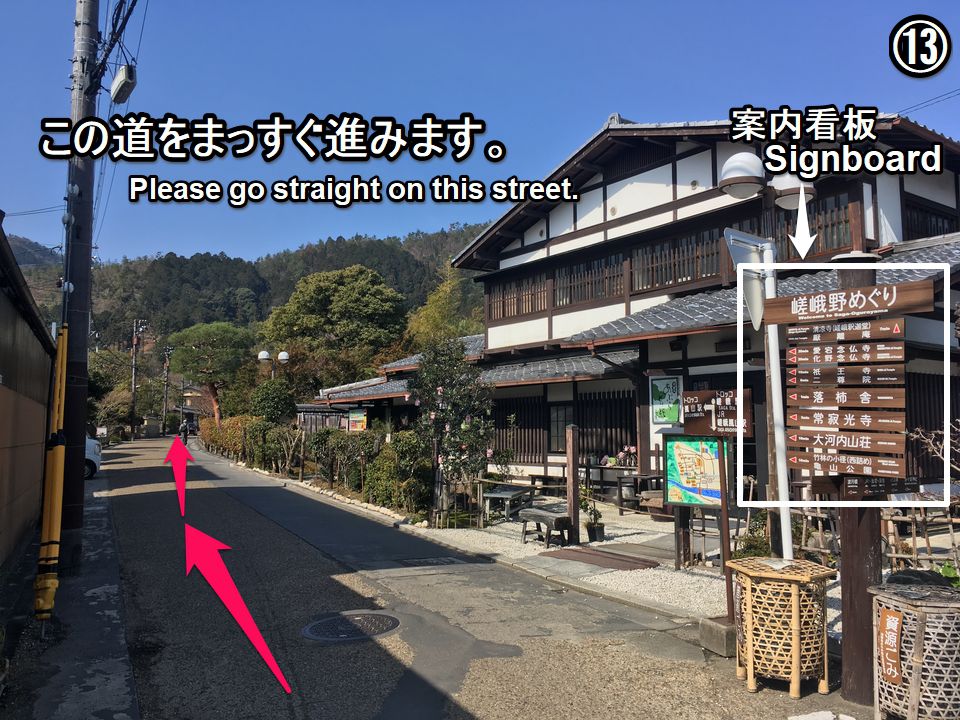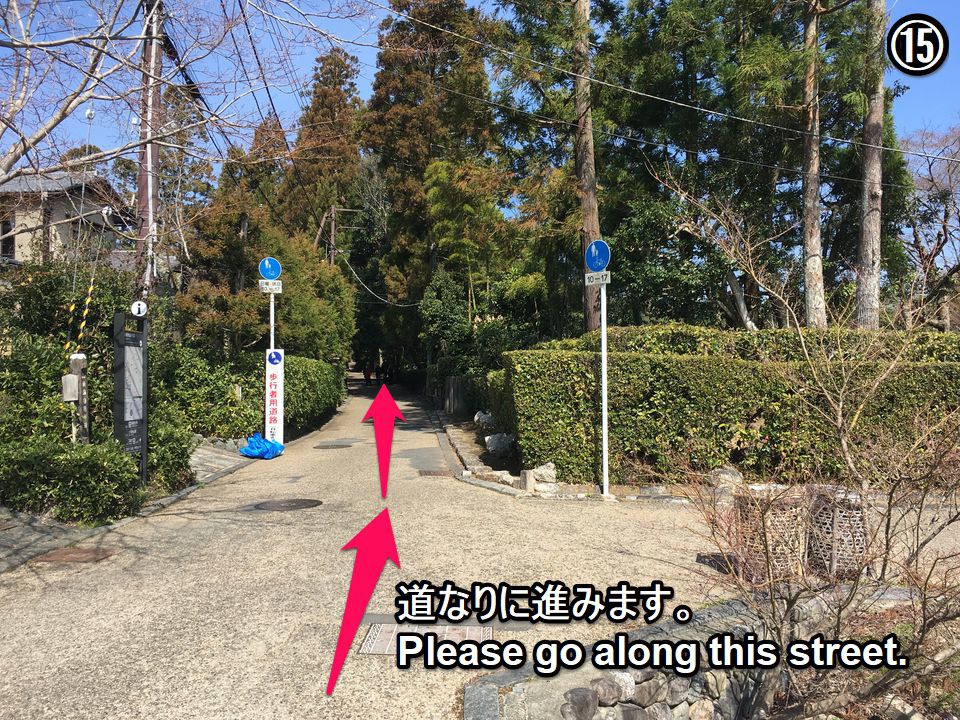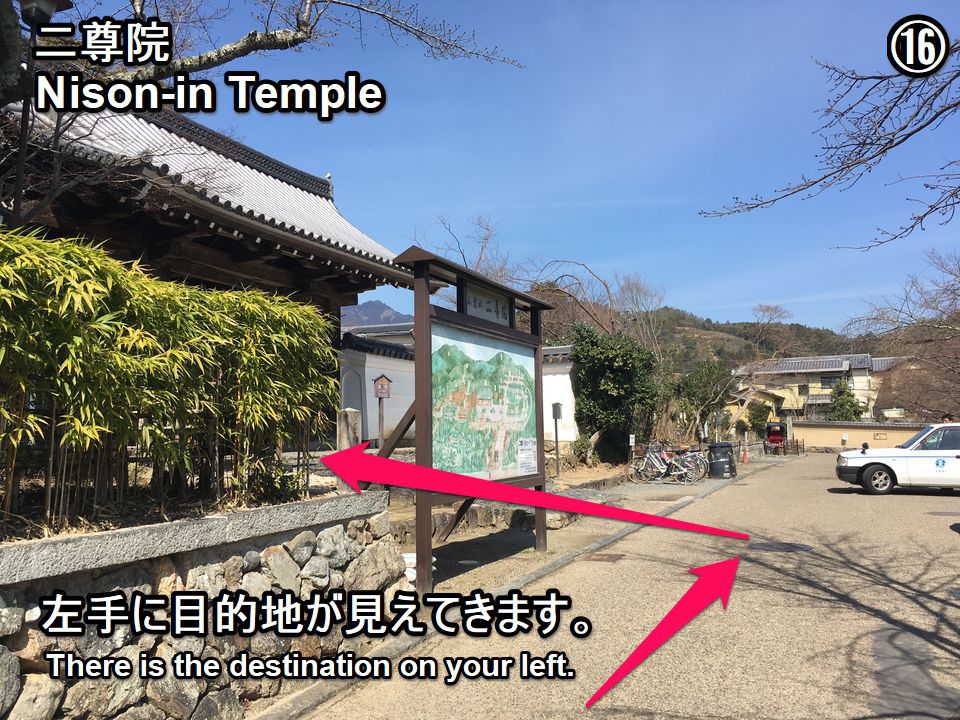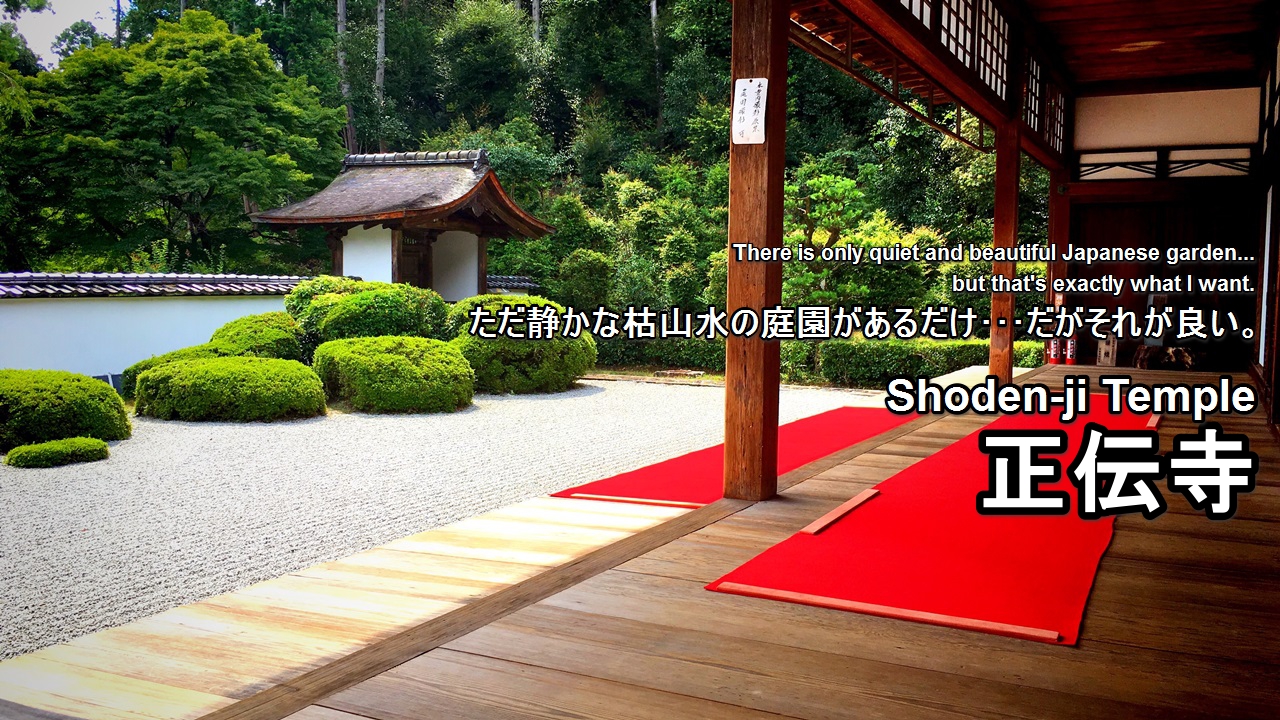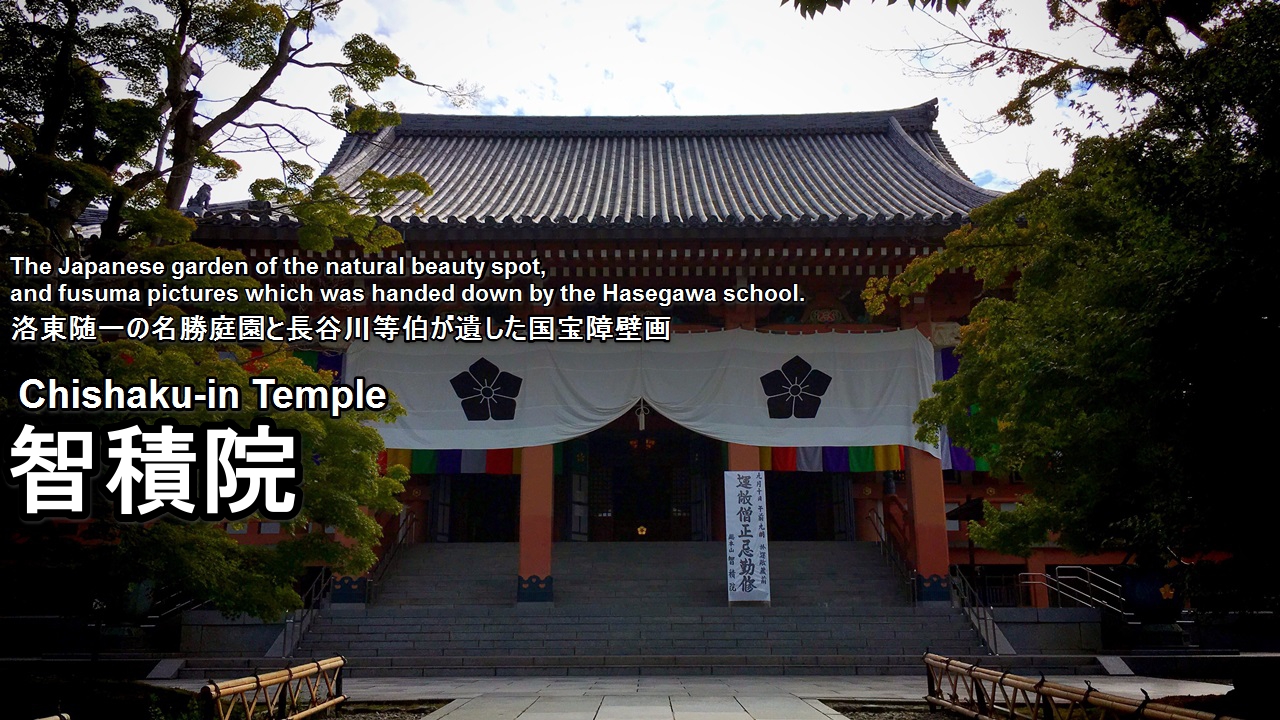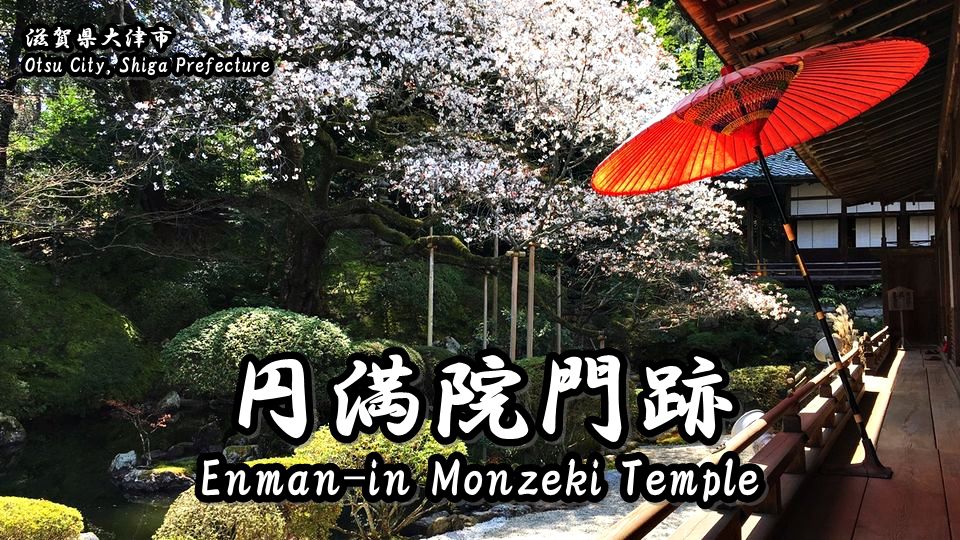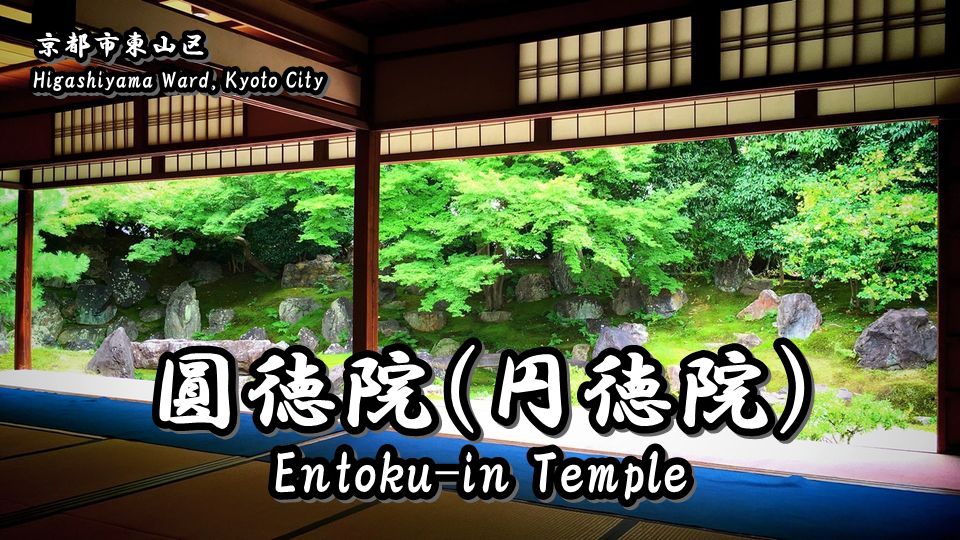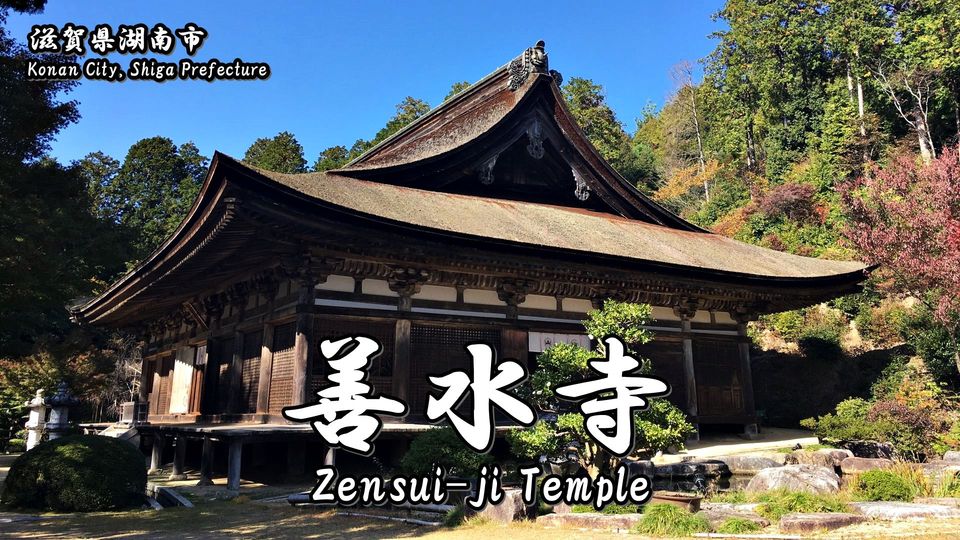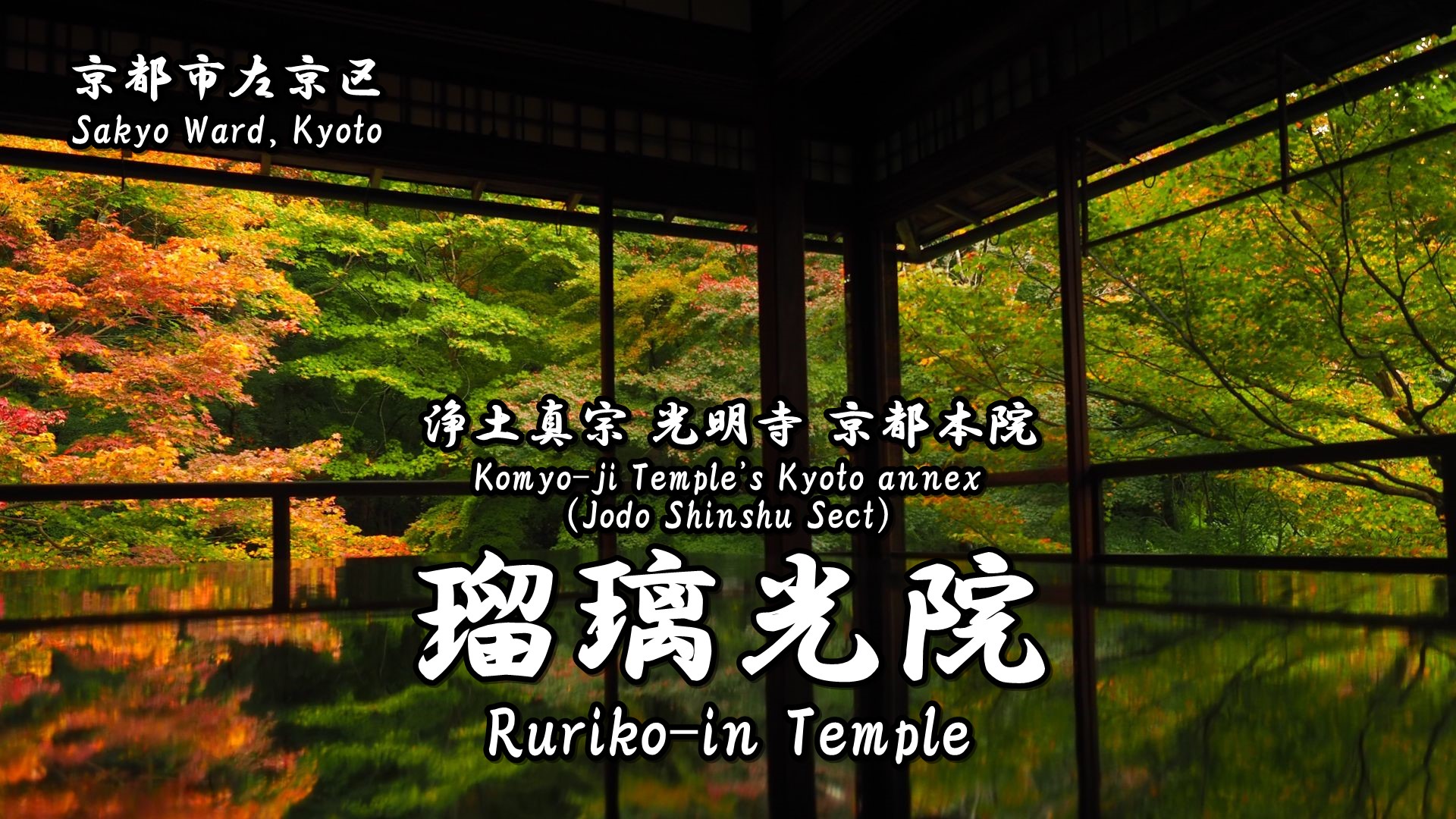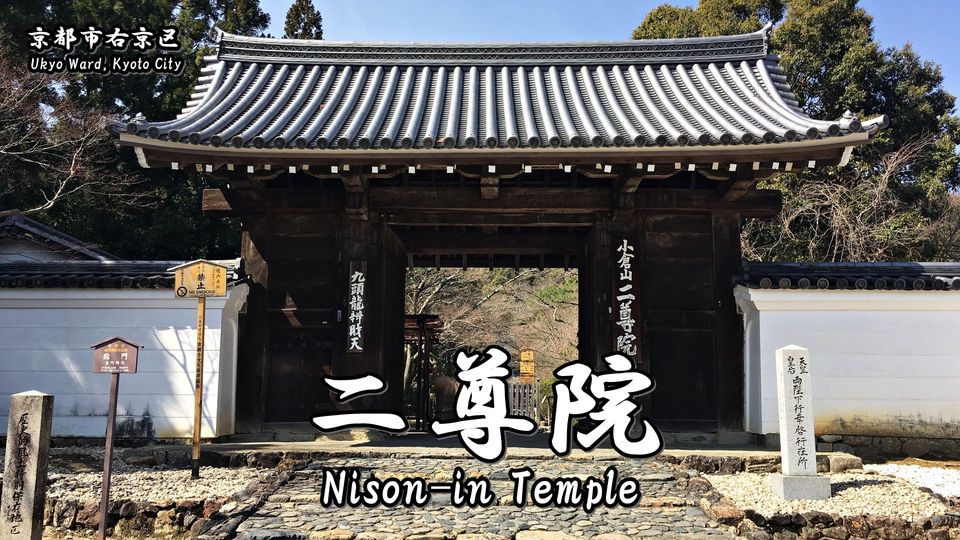
Nison-in Temple (二尊院), official name is ‘Ogurasan Nisonkyo-in Kedai-ji Temple’, is a Tendai Sect Buddhist temple located in Ukyo Ward, Kyoto City.
It is located in the quiet place of Northern Arashiyama, and is also one of the Saga-Arashiyama’s three great monzeki (a high ranking) temple along with Tenryu-ji Temple and Daikaku-ji Temple.
FUJIWARA no Sadaie is said to have built Shigure-tei villa in this area and selected Ogura Hyakunin Isshu (Hundred Poems by One Hundred Poets) in the villa.
History of Nison-in
It was founded by Jikaku Daishi Ennin at the imperial order by Emperor Saga in the Jowa era (834-847) of the Heian period.
So, it is one of the Saga-Arashiyama’s three great monzeki (a high ranking) temple.
Originally it was a temple which could learn four doctrines (Tendai Sect, Shingon Sect, Ritsu Sect and Jodo Sect) but was converted to the Tendai sect in the Meiji period.
Two budda images (Shaka Nyorai and Amida Nyorai) are enshrined in the main hall.
Because ‘Two budda images’ is ‘Nison (二尊)’ in Japanese, this temple is called ‘Nison-in Temple’.
About Nison-in
Information
| Address | 27, Saganisonimmonzen Chojincho, Kyoto Shi Ukyo Ku, Kyoto Fu, 616-8425, Japan |
| Phone | +81-75-861-0687 |
| Foundation | 841 (Heian period) |
| Founder | Ennin (円仁) |
| Sect | Tendai Sect (天台宗) |
| Principal image | Shaka Nyorai (釈迦如来) / Amida Nyorai (阿弥陀如来) |
Open
9:00-16:30
Admission Fee
| Junior high school students or older | 500 yen |
| Elementary school students or younger | Free |
Temple’s Website
Other information
・It is information as of March, 2019.
・Please ask temple’s staff where you can take photos and videos.
・Worship method of a shinto shrine and a buddhist temple, please refer to the following article.
Next, let’s see highlights of this temple with me!
Highlights of Nison-in
- 総門(So-mon gate)
- 紅葉の馬場*(Riding ground)*
- 西行法師庵の跡*(Saigyo-an Hermitage site)*
- 黒門*(Kuro-mon gate)*
- 勅使門*(Chokushi-mon gate)*
- 竜神遊行の庭*(Ryujin-yugyo-no-niwa garden)*
- 本堂*(Hon-do hall)*
- 寂光園*(Jakko-en garden)*
- 御園亭*(Misono-tei (Tea-house))*
- 六道六地蔵の庭*(Garden of the Roku Jizo (six Jizo))*
- 位牌堂*(Ihai-do hall)*
- 弁天堂*(Benten-do hall)*
- 鐘楼/しあわせの鐘*(Bell tower / Bell of happiness)*
- 湛空廟/法然上人廟*(Mausoleum of Tanku / Honen)*
- 時雨亭跡*(Ruins of the Shigure-tei)*
- 旧三帝陵*(Mausoleums of three emperors)*
- 八社ノ宮*(Hassha-no-miya shrine)*
- 角倉了以像*(The statue of Ryoi SUMINOKURA)*
- 小倉餡発祥之地の石碑*(Stone monument of ‘the place of ogura-an’s birth’)*
- 四季庵(Shiki-an)
This mark (*) is a pay area.
総門(So-mon gate)
It was relocated from Fushimi-jo castle in 1613 of the early Edo period and was designated a Cultural Property of the City of Kyoto.
紅葉の馬場*(Riding ground)*
There is a long, large approach to the temple in the precincts.
It was used as a riding ground in old days.

Because the autumn leaves are beautiful in autumn, it is also called ‘Riding ground of autumn leaves’.
西行法師庵の跡*(Saigyo-an Hermitage site)*
There is the Saigyo-an Hermitage site on the approach.
Saigyo was a great Waka poet from the end of the Heian Period to the beginning of the Kamakura Period.
黒門*(Kuro-mon gate)*
Kuro-mon gate has the role of the side gate of this temple.
勅使門*(Chokushi-mon gate)*
Chokushi-mon gate has a role of the front gate of this temple.
It was rebuilt in 1521 of the Muromachi period using funds donated by Sanetaka SANJONISHI who was famous as the greatest man of culture of the Muromachi period.
竜神遊行の庭*(Ryujin-yugyo-no-niwa garden)*
本堂*(Hon-do hall)*
It was rebuilt in 1521 of the Muromachi period using funds donated by Sanetaka SANJONISHI who was famous as the greatest man of culture of the Muromachi period.

Shaka Nyorai (釈迦如来) and Amida Nyorai (阿弥陀如来) are enshrined into the main hall.
寂光園*(Jakko-en garden)*
御園亭*(Misono-tei (Tea-house))*
It is said to be the dressing hall of the princess of Emperor Gomizunoo that was relocated to its current site.
It has the role of the tea-ceremony room now, only open to the public on specific days in spring and autumn.
六道六地蔵の庭*(Garden of the Roku Jizo (six Jizo))*
Rokudo is a Buddhist term and it means six posthumous worlds to which the souls of the dead transmigrate, and Jizo Bosatsu relieve each of the six worlds.
位牌堂*(Ihai-do hall)*
弁天堂*(Benten-do hall)*
Kuzuryu Benzaiten (God that Benzaiten transformed herself into a dragon) is enshrined in the hall.
鐘楼/しあわせの鐘*(Bell tower / Bell of happiness)*
湛空廟/法然上人廟*(Mausoleum of Tanku / Honen)*
It is the grave of Tanku (Third chief priest of this temple) and Honen (Founder of the Jodo Sect).
時雨亭跡*(Ruins of the Shigure-tei)*
FUJIWARA no Sadaie is said to have built Shigure-tei villa in this area and selected Ogura Hyakunin Isshu (Hundred Poems by One Hundred Poets) in the villa.
旧三帝陵*(Mausoleums of three emperors)*
These are the mausoleums of Emperor Tsuchimikado, Emperor Gosaga and Emperor Kameyama.
八社ノ宮*(Hassha-no-miya shrine)*
Because this is the direction of Kimon (demons’ gate) in the precincts, Eight gods are enshrined here.
角倉了以像*(The statue of Ryoi SUMINOKURA)*
Ryoi SUMINOKURA (1554 – 1614) was a wealthy merchant in Kyoto, and he made many canals in Kyoto.
小倉餡発祥之地の石碑*(Stone monument of ‘the place of ogura-an’s birth’)*
The area around this temple and Mt. Ogura is said to be the birthplace of ogura-an (sweet azuki bean paste containing both mashed and whole beans).
四季庵(Shiki-an)
We can eat a sweets made using ogura-an in the temple’s teahouse, ‘Shiki-an’.
Autumn leaves of Nison-in
The best season of autumn leaves is from late November to early December.
Video of Nison-in
Photos of Nison-in
Goshuin (Red ink stamp) of Nison-in
We can get these goshuin at the reception desk of the main hall. (300 yen)
How to get to Nison-in
Nearest station is ‘Hankyu Arashiyama Line Arashiyama Station’, ‘Randen Arashiyama Station’ and ‘JR Saga-Arashiyama Station’.
We can also go by bus from Kyoto Station, Kyoto Kawaramachi Station and Gion-shijo Station.
From Osaka Umeda Sta. to Arashiyama Sta. (by train)
Timetable and Route Search (train)
1.Get on the Hankyu Kyoto Line from Osaka Umeda Station to Katsura Station and change to the Hankyu Arashiyama Line.
2.Get on the Hankyu Arashiyama Line from Katsura Station to Arashiyama Station.
From Namba Sta. to Arashiyama Sta. (by train)
Timetable and Route Search (train)
1.Get on the Osaka Metro Midosuji Line from Namba Station to Umeda Station and change to the Hankyu Kyoto Line.
1.Get on the Hankyu Kyoto Line from Osaka Umeda Station to Katsura Station and change to the Hankyu Arashiyama Line.
2.Get on the Hankyu Arashiyama Line from Katsura Station to Arashiyama Station.
From Kyoto Sta. to Saga-Arashiyama Sta. (by train)
Timetable and Route Search (train)
1.Get on the JR Sagano (Sanin Main) Line from Kyoto Station to Saga-Arashiyama Station.
From Arashiyama Sta. to Nison-in (on foot).
It’s about 40 minutes (2km) on foot.
Get on a bus from Kyoto Station
Timetable and Route Search (bus)
Please get on a Kyoto City Bus No.28 bound for Daikakuji Temple Via Arashiyama at Kyoto Sta. C6 bus stop and get off Saga Shogakko-mae bus stop.
Bus company:Kyoto City Bus
Routes/Destination:No.28[Bound for Daikakuji Temple Via Arashiyama]
Boarding bus stop:Kyoto Sta. C6
Alighting bus stop:Saga Shogakko-mae
Bus fare:230 yen
Time required:About 48 min
Get on a bus from Kyoto Kawaramachi Station
Timetable and Route Search (bus)
Please get on a Kyoto City Bus No.11 bound for Saga Arashiyama at Shijo Kawaramachi D bus stop and get off Saga Shogakko-mae bus stop.
Bus company:Kyoto City Bus
Routes/Destination:No11[Bound for Saga Arashiyama]
Boarding bus stop:Shijo Kawaramachi D
Alighting bus stop:Saga Shogakko-mae
Bus fare:230 yen
Time required:About 47 min
Get on a bus from Gion-shijo Station
Timetable and Route Search (bus)
Please get on a Kyoto City Bus No.11 bound for Saga Arashiyama at Shijo Keihan-mae C bus stop and get off Saga Shogakko-mae bus stop.
Bus company:Kyoto City Bus
Routes/Destination:No11[Bound for Saga Arashiyama]
Boarding bus stop:Shijo Keihan-mae C
Alighting bus stop:Saga Shogakko-mae
Bus fare:230 yen
Time required:About 50 min
Take a taxi
From Kyoto Station:about 5,000 yen (30 minutes)
From Arashiyama Station:about 1,000 yen (10 minutes)
・Let’s show a taxi driver the following phrase.
・If you want to call a taxi, let’s show the following phrase.
・Phone number of taxi dispatch (Around Kyoto Sta.)
・Phone number of taxi dispatch (Around Hankyu Arashiyama Sta.)
Hotel search & reservation around Nison-in
How did you like it?
Have a nice trip!


